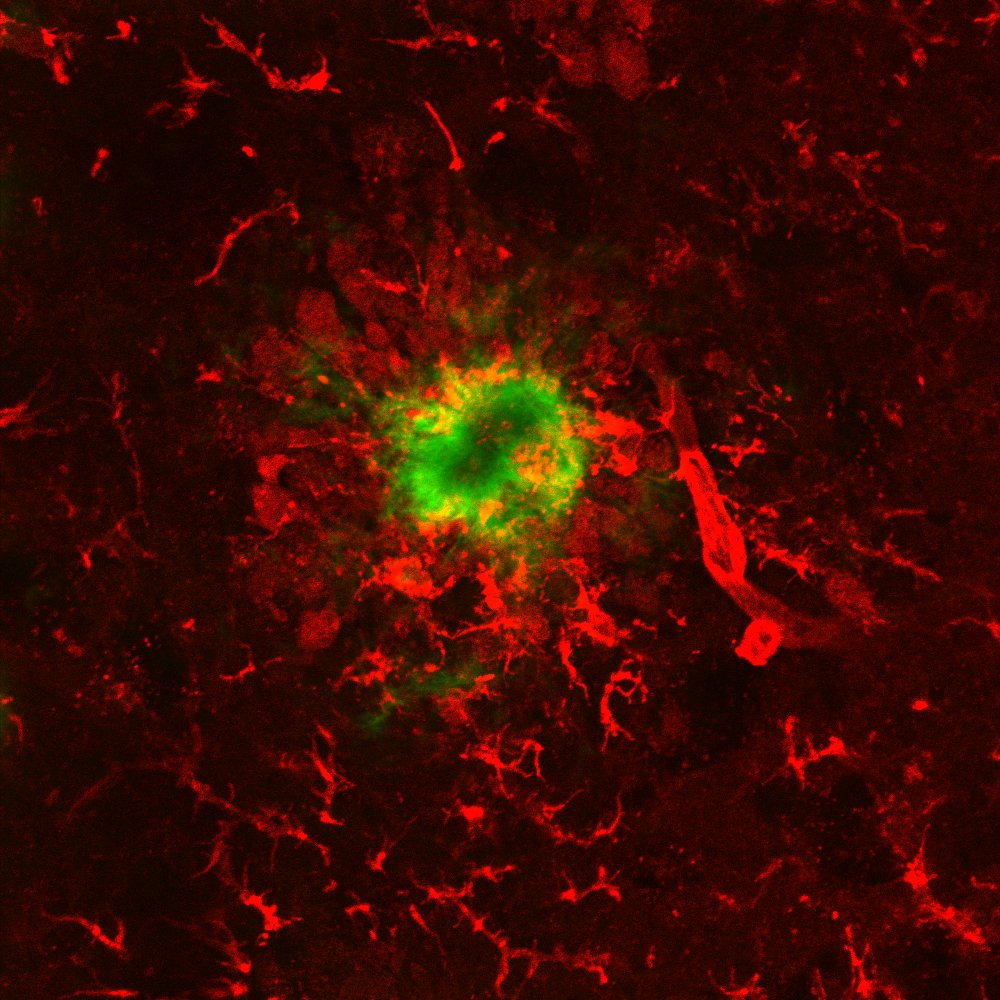I want to show you what microhemorrhages and brain swelling from anti-amyloid immunotherapies look like under a microscope. In this severe case, many of the vessels simply disintegrated - see the bleeding and numerous aneurysms in this striking image. #Alzheimer #lecanemab
This is a piece of human brain from a patient who died from a side effect of the Alzheimer's drug lecanemab. The tissue is about 2.5 x 2.5 x 1cm and has been "cleared", allowing us to see the vessels in three dimensions using a type of microscope called a lightsheet.
The video shows a 3D rendering of the tissue block with vessels false-colored pink. The hazy background around some of the vessels (see yellow arrows) is from bleeding (the ruptured ends of the vessel are at the red arrows). Blood propagates in perivascular spaces some distance. 

There are also lots of aneurysms (a couple marked in green arrows in the last image). The vessels should be smooth and gently tapering and branching. Twisted, kinked or distended vessels are not normal. See this video in 4k on YouTube:
On an MRI we can see swelling and some of the larger areas of bleeding, but these pictures show how extensive the vascular degeneration can be. You can see more details from this important case in our preprint here: medrxiv.org/content/10.110…
We are incredibly grateful to this patient's family for allowing us to study her brain. They tell their story here: dailymail.co.uk/health/article…
As the FDA considers approval of lecanemab, they should prioritize the safety of Alzheimer's patients. Iatrogenic cerebral amyloid related encephalitis (iCARE) can be serious and life-threatening and calls into question whether the minor benefits of this drug outweigh the risks.
Image credit to @AntunesLissa from the SchragLAB (@LabSchrag) and Jose Maldonado (Vanderbilt Neurovisualization Lab). @VUCellImaging @VUMCneurology @VUMCDiscoveries @VanderbiltAlz @US_FDA @nvillain_alz @ProfRobHoward @a_charidimou @MadhavThambiset @cpiller @ApostolovaLiana
• • •
Missing some Tweet in this thread? You can try to
force a refresh

 Read on Twitter
Read on Twitter







